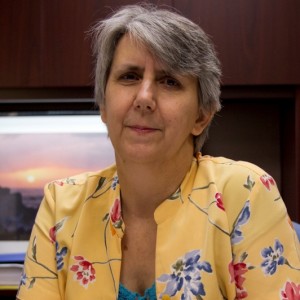 For 10 years the Centers for Disease Control and Prevention has been tracking the increase in diagnoses of autism in kids. Last month, the CDC released data showing that one in 88 children in the United States is being diagnosed with a cluster of symptoms associated with autism, which include:
For 10 years the Centers for Disease Control and Prevention has been tracking the increase in diagnoses of autism in kids. Last month, the CDC released data showing that one in 88 children in the United States is being diagnosed with a cluster of symptoms associated with autism, which include:
• rigidity, or opposition to change
• difficulty interacting with others
• trouble making eye contact
• attachment to objects
• issues with language and self-expression.
The results are skewed towards boys, with one in 54 being diagnosed, as compared to one in 252 girls. This is a 23 percent increase in cases since the CDC’s last report in 2009. But more shockingly is the 78 percent increase since 2007. According to the CDC’s website, “Some of the increase is due to the way children are identified, diagnosed and served in their local communities, although exactly how much is due to these factors is unknown.”
This is a serious problem. In fact, some organizations are being overwhelmed. Mark Roithmayr, the president of Autism Speaks, says the number of diagnosis of the disorder “can now officially be declared an epidemic in the United States.”
The disorder was first studied in 1938 at the Vienna University Hospital by Hans Asperger. He has since had a specific set of symptoms named after him, Asperger’s Syndrome. A person with Asperger’s will retain speech and cognition, but children with this grouping of symptoms will be characterized by an inability to “read” body language causing difficulty in social interaction, coupled with focused and repetitive interests. One child might be able to name all of the names of the dinosaurs, including their scientific names, but have no interest whatsoever in remembering the names of cousins or relatives.
Whatever the symptoms, the parents are the ones who can never take a day off from the disease. Since the behaviors can be so extreme and we have a culture of blaming parents for any bad behavior performed by their children, families with an autistic child may isolate themselves. As a mom copes with another screaming tantrum, it may be tempting to wonder why this child turned out this way and whether she did something wrong.
And there is the rub. Despite the years of studying this disorder, there isn’t a definitive answer for these parents who struggle every day to care for a child who may have quit talking 10 years before.
A small ray of hope has recently come with the announcement in the journal Nature about ground breaking research that finally identified gene mutations as one of the causes.
If someone you love is experiencing some of the behaviors associated with autism, run don’t walk, to the nearest authoritative resource today to start learning how to intervene to have the best outcome for your child. A diagnosis before age three is recommended to provide resources and intervention. There are various ranges of this disorder. Some live cocooned in their own little worlds while others, such as Temple Grandin, who eventually earned her PhD, function perfectly fine in society.
We may never know why one child develops the symptoms of autism, while a brother or sister does not. And, we may never know exactly how to cure the child. But, let’s not take away from the humanity of those children by labeling or shelving them for the rest of their lives. And, let’s give the parents of an autistic child a day off. Support your local autism resource center by volunteering one day a week, one day a month or by sending in a donation. Every little bit is needed to lift a little bit of the burden felt by the parents of the one in 88.

Horrific abuse of person on autism spectrum: http://www.nbcsandiego.com/news/local/Caregivers-Caught-on-Tape-Abusing-Autistic-Man-Valley-Center-170444546.html
http://www.hlntv.com/video/2012/09/27/caught-tape-autistic-man-allegedly-abused-caregivers
http://transcripts.cnn.com/TRANSCRIPTS/1209/27/ddhln.01.html
http://www.cbs8.com/story/19604621/2-men-accused-of-abusing-autistic-man-plead-not-guilty
http://www.hlntv.com/video/2012/09/27/caught-tape-autistic-man-allegedly-abused-caregivers
http://transcripts.cnn.com/TRANSCRIPTS/1209/27/ddhln.01.html
http://protectsgv.com/2012/09/autistic-man-abused-in-his-own-home-by-caregivers-hired-by-his-own-family/
Caregivers caught on tape abusing defenseless severely autistic young man is a wake up call to all of us in autism communities across the globe. Video surveillance catching the abusers probably saved this young man’s life!
http://joashline.com/2012/09/video-autistic-man-abused-by-caregivers.html